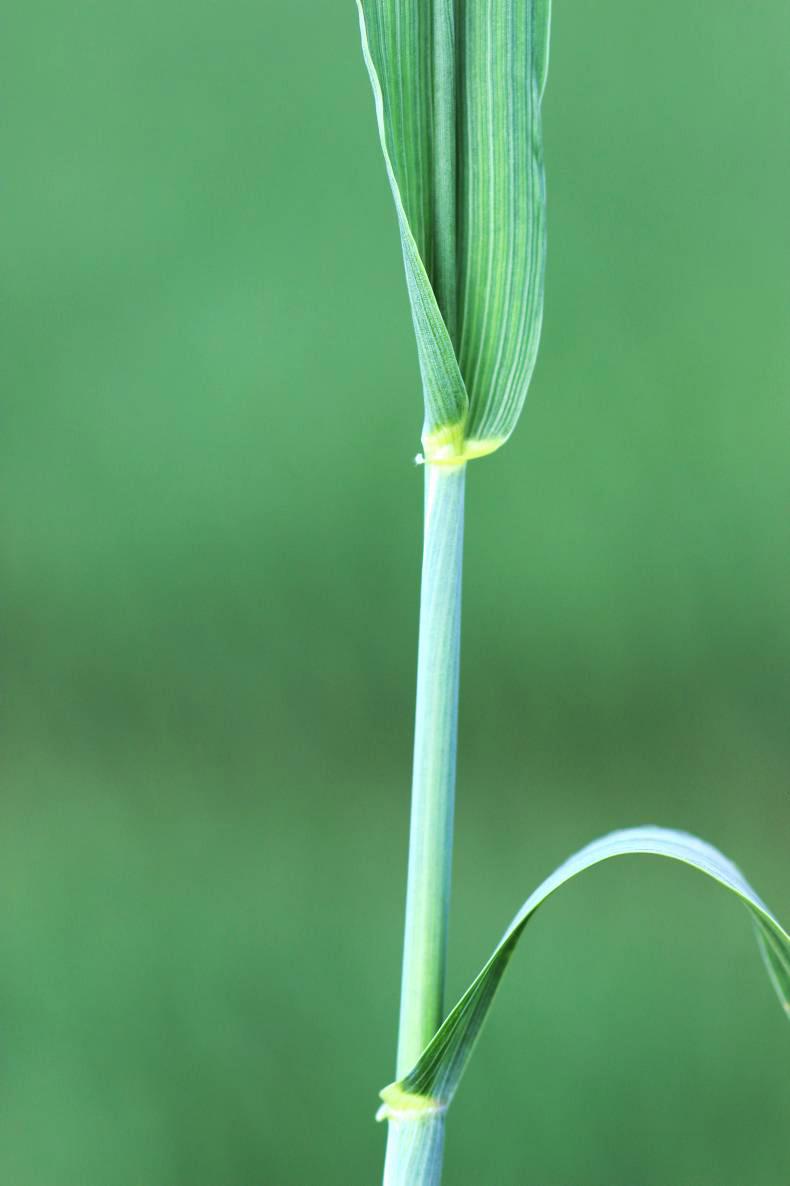Early this week, I took a tour through parts of north Kildare. This region is predominantly winter cereal, plus a few other crops such as rape and spring cereals. Crops had moved on considerably following the recent heat and there was a bit more variation obvious.
Winter wheat
Crops had moved from GS32 to GS33, with the third-last leaf fully emerged and unfolding. This is the target timing for the T1 fungicide.
Crops varied a bit in appearance. In one crop, the majority of the lower leaves had died off and there was visible septoria on upper leaves. There were no weeds evident and the grasses in the base were dying off. Areas that had even more broken weather have higher septoria infection now.
Another crop I visited had a more variable plant population. Establishment was obviously affected in the chaff trail from last year’s harvest. This crop had been min-tilled with straw incorporated.
Plants in the chaff trails were fewer and much weaker. It could be that the wet winter was particularly hard on the crop where both chaff and straw were present and rotting.
This crop was still around GS33, but it was more open. There was more leaf down in the canopy and less septoria present. Control of grass weeds and volunteer oats looks good, but there was a lot of poppy present which were not fully controlled by the early herbicide. There were also a few patches of bad chickweed.
Winter barley
Crops had quickly moved to flag leaf fully emerged and booting. Two quick comments – they looked quite clean with regard to disease and they were quite short. However, there could be a lot of extension in the next three weeks. A few forward crops already have awns emerging. There was a small bit of rhyncho in this crop.
Winter oats
I walked into one really nice-looking crop of winter-sown oats. This crop was full, uniform and the broadleaved weeds had been controlled. Grass weeds were not controlled, but it looks like the crop itself will fill in and smother them shortly.
This crop was quite short, given that the flag leaf was fully emerged. The internodes still looked to be relatively compact, indicating that growth regulator had already been applied. But this crop is likely to get very tall and further growth regulator might be useful, depending on what had been applied to date.
There was nothing much in the way of foliar disease present. There may have been a bit of red leather disease, but this was not a problem. There were a few old mildew pustules, but no sign of crown rust.
However, one worrying finding was the presence of oat mosaic virus. This is a soil-borne virus which will spread during cultivation and quickly prevent the production of winter-sown oats on this land. It has been a few years since I have seen this in crops. The symptoms were a stunting of the crop combined with a pale colour, which is caused by the mottled symptoms.
Oilseed rape
I was in two very different winter rape crops. One looked to be early sown and had quite a lot of pods already formed in its very short but densely flowering canopy. The other crop was only coming into flower – it had been hit by pigeons. This latter crop had a lot of branches, which were only coming into flower.
It had weeds present, mainly hedge mustard and poppy. These are still at the base, but they will come up through because the canopy has been slow to cover over.






 This is a subscriber-only article
This is a subscriber-only article













SHARING OPTIONS: